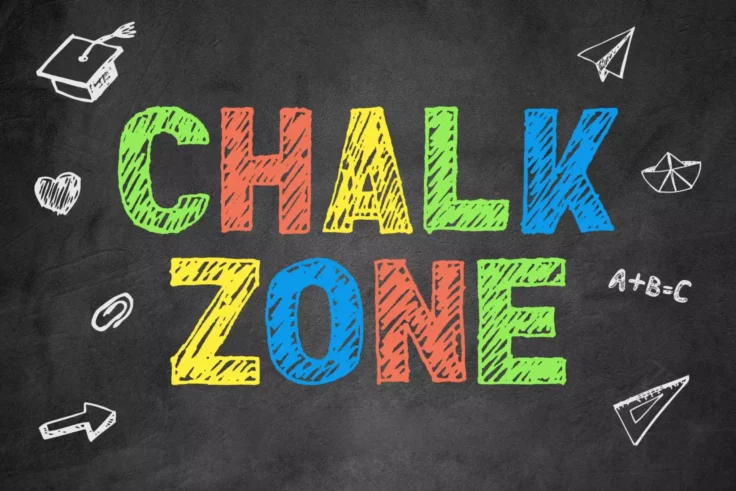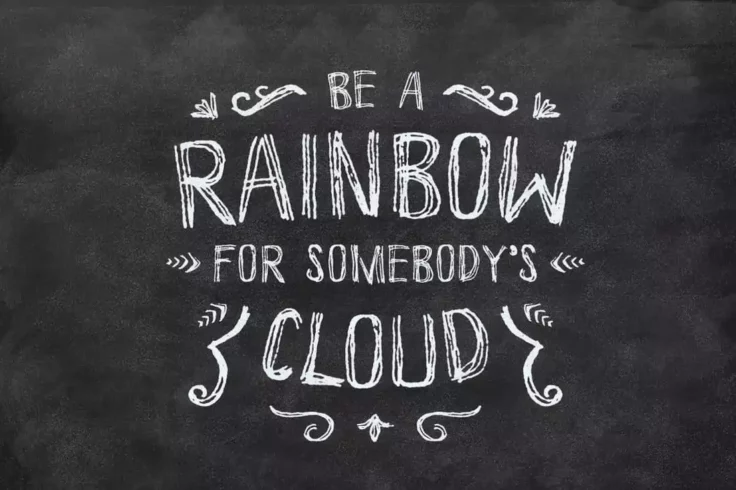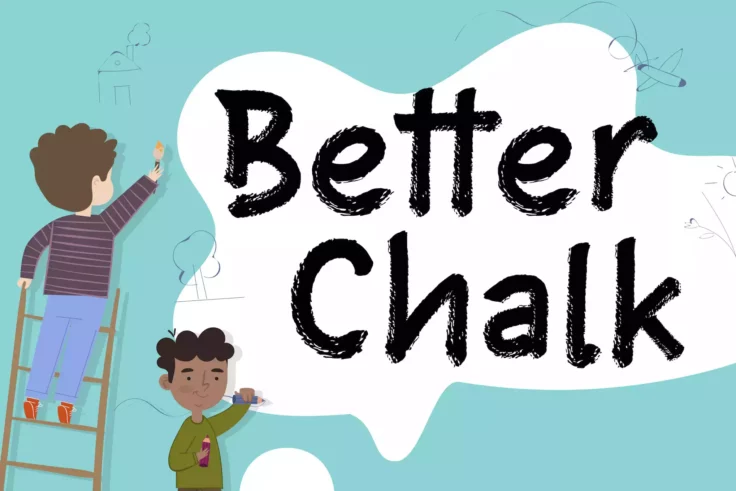15+ Best Chalk & Chalkboard Fonts
Chalkboard fonts are a popular choice among marketers, especially when it comes to making explainer videos, infographics, and social media posts. It's tricky to design, great-looking chalk fonts, and we've picked some of the best, all gathered in one place.

BiteChalk Chalkboard Font
BiteChalk is one of the best looking chalkboard fonts we’ve seen. It features a unique handcrafted design with a realistic look that’ll definitely...

BrideChalk Font
If you’re working on a wedding invitation or a greeting card design, this chalkboard font is the perfect choice for you. Bridechalk font comes with ...

Cheddar Gothic Rough Font
Cheddar Gothic is a bold textured font with a rough design. Even though it’s technically not a chalkboard font, you can use it to design creative me...

DeCapoers Font
DeCapoers is a chalkboard font with a modern design. The character design of the font looks almost like how letters look when you draw on a rough wall...

Hungry Chalk Typeface
Hungry chalk is a fun and quirky chalkboard font made for creative professionals. This font has its own unique style and creative characters that give...

Thick Chalkboard Font
Here we have a thick, and chunky chalkboard font that will look good on a range of classroom themed projects. Every letter is drawn with a lot of love...

Chalk Times Typeface
Chalk Times is a cute, and bubbly chalk style outlined font thay’s sure to bring an incredibly unique personality to the table. Use this font wi...

Donnis Bold Chalk Font
A thick bold chalk font that’s most suitable for making big titles and headlines in your designs. This font features all-uppercase letters as well a...

Chalk Zone Font
Featuring the authentic touch, and roughness of the chalk, Chalk Zone is an excellent sans-serif font that fits a multitude of design projects. Whethe...

Tuck Shop Font
Tuck Shop is a one-of-a-kind typeface that brings a playful and authentic touch to any project. The hand-drawn design mimics the look of chalk writing...

Cafe Francoise Font
This font comes with a smooth chalkboard design that makes it look quite different from other fonts in our collection. In addition to the characters, ...

LaChalk Chalkboard Font
LaChalk comes with a stylish script-style lettering design that makes it most suitable for designing banners, logos, posters, and more for high-end br...

Chalk Scratch Typeface
Chalk Scratch is a fun, and creative typeface guaranteed to add an element of childlike playfulness to your projects. A fantastic choice for kids, and...

Vanderchalk Typeface
This chalkboard font is most suitable for making minimalist designs with a handmade look. You can use it to design website headers, titles, menu board...

Buckley Serif Font
Buckley features a vintage chalkboard design that’s perfect for making signage, posters, and menu boards for vintage-themed restaurants and cafes. T...

Better Chalk Typeface
Better Chalk is a playful, and friendly font guaranteed to draw your audience in at a glance, and keep them hooked. A great option for educational mat...
FAQs About Chalk & Chalkboard Fonts
What are Chalk & Chalkboard Fonts?
Chalk and Chalkboard fonts are a specific category of digital typography designed to mimic the appearance of text written with chalk on a chalkboard. These fonts encompass a wide range of styles, from clean and professional to rough and handwritten, allowing for significant versatility in their use. Their distinctive character stems from the textured, uneven, and slightly smudged appearance that replicates the look of real chalk writing.
Often, these fonts are accompanied by additional elements such as chalk dust, smudge effects, or chalk-like doodles and borders. This further enhances the authentic chalkboard aesthetic in a digital design context.
Where are Chalk & Chalkboard Fonts Commonly Used?
Chalk and Chalkboard fonts are frequently used in contexts where an informal, charming, or nostalgic atmosphere is desirable. They are particularly popular in food and beverage industry graphics, such as menus and signs for cafés, bistros, and bakeries. The hand-drawn, informal style of these fonts can create an inviting and cozy atmosphere.
Additionally, these fonts are often utilized in education-themed designs, children's books, party invitations, and DIY craft projects. Their playful, relaxed character makes them perfect for adding a personal and creative touch to various designs.
What Should I Consider When Using Chalk & Chalkboard Fonts?
When using Chalk & Chalkboard fonts, it's crucial to consider the context and audience of your design. These fonts carry a casual and playful vibe, making them unsuitable for formal or corporate settings. They are also typically less legible than standard typefaces, particularly in small sizes or long paragraphs, due to their textured and uneven character.
Further, these fonts often work best against dark backgrounds that resemble real chalkboards. Light or cluttered backgrounds may diminish their visual impact. It's always a good idea to test these fonts in your design to ensure readability and visual appeal.
How Can I Install Chalk & Chalkboard Fonts on My Computer?
Installing Chalk & Chalkboard fonts on your computer is a relatively straightforward process. Once you've downloaded the font file, typically a .ttf or .otf format, you can open it and click 'Install'. This will make the font available across various applications that support custom fonts on your computer.
Do note that the installation process can slightly vary depending on the operating system you're using. It's recommended to refer to your system's specific instructions if you encounter any issues during the font installation.
What are Some Popular Chalk & Chalkboard Fonts?
There are several popular Chalk & Chalkboard fonts that designers frequently turn to. "Chalkduster" is a commonly used option available on many systems, offering a clean chalk look. "DK Crayon Crumble" emulates a child's crayon writing, while "Eraser" captures the quintessential chalkboard vibe. Fonts like "Return To Sender" and "Chalk Hand Lettering Shaded" are also popular for their distinct styles.
Keep in mind that the best font depends on the specific needs of your project. A more whimsical font might be suitable for a children's event invitation, while a cleaner, professional chalk font may be better for a restaurant menu. As always, the key is to consider the font's appropriateness for its intended use.